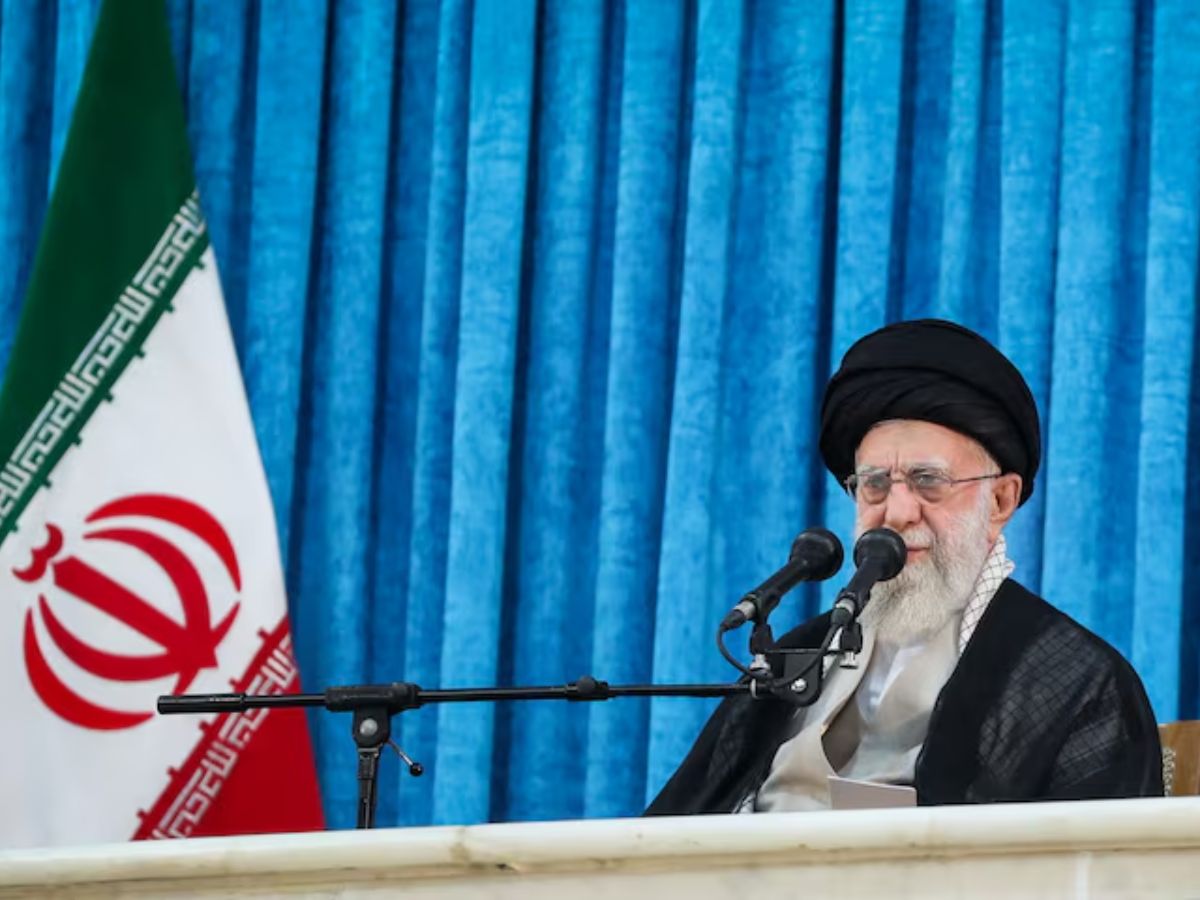With the tensions between Israel and Iran escalating to unprecedented levels following the Israeli airstrikes targeting key military and nuclear facilities inside Iran and reports of Trump vetoing an Israeli proposal to assassinate Iranian Supreme Leader Ayatollah Ali Khamenei, the focus is turning to Israel’s possible strategic objectives behind the potential targetting of the 86-year-old Supreme Leader of Iran. So, why is Khamenei a high-value target, and what would his removal mean for the region? Here’s everything you need to know.
Does Khamenei’s Role as the Powerhouse of Iran Make Him a High-Value Target?
Ayatollah Khamenei has been a seemingly unshakable figure in Iran since 1989, holding ultimate control over the country’s military, politics and nuclear ambitions. Unlike most national leaders, Khamenei’s influence extends far beyond the executive office, especially given that he is deemed the country’s spiritual guide and commander-in-chief of its armed forces, with the power to declare war, appoint senior figures, and make final decisions on key matters concerning the region.
But this centralisation of power also makes Khamenei particularly vulnerable. And now, with Israel believed to be increasing its strikes on Iranian infrastructure and military assets, his leadership is being directly threatened, as his inner circle of trusted military commanders and security advisors take heavy losses.
What Is Israel’s Focus? Netanyahu Says It’s Not Against the Iranian People, But the Regime
Israel’s prime minister, Benjamin Netanyahu, has described the Iranian regime as an “existential” threat to Israel, all while stressing that Israel’s fight is not with the Iranian people but with what he calls the “murderous Islamic regime” that has ruled Iran since the 1979 Islamic Revolution, according to a CBS News report. Netanyahu asserted that Israel’s strategy is aimed at bringing about a regime change in Iran while suggesting that it could play a role in facilitating that change.
Responding to a question on whether Israel would go so far as to assassinate Khamenei, Netanyahu told ABC News during a recent interview, “Israel is doing what we need to do,” even as he dismissed the notion that such an action would escalate the conflict, insisting that it would, in fact, “end the conflict.”
The Israeli military campaign against Iran has already dealt a serious blow to Khamenei’s closest military commanders, Reuters reported. Israel’s airstrikes, reports suggest, have killed top figures within Iran’s Revolutionary Guard Corps, including Hossein Salami, the commander-in-chief; Amir Ali Hajizadeh, the chief of Iran’s ballistic missile program; and Mohammad Kazemi, the head of Iranian intelligence.
Earlier this week, the Israeli military claimed to have killed Ali Shadmani, the newly appointed chief of staff of Iran’s armed forces, just days after his appointment. “He was eliminated at the Iranian regime’s headquarters in the heart of Tehran. He was the most senior military commander of the Iranian regime, closest to Khamenei,” CBS News quoted Israeli Brigadier General Effie Defrin as saying on Tuesday.
What Would Happen In the Event of Khamenei’s Death?
While Israel’s targeted attacks have reportedly left Khamenei’s inner circle with gaps in leadership, experts say that the Islamic Republic is not just a one-man operation. Holly Dagres, a regional expert at the Washington Institute, told CBS News that Iran’s system of governance is akin to the Vatican’s College of Cardinals, with an Assembly of Experts responsible for electing the supreme leader. The body comprising 88 senior clerics would likely step in to select a new leader in the event of Khamenei’s death, the report said.
“The thing with the Islamic Republic is this isn’t just one man and some generals. It’s a system that’s well thought through. If Khamenei were to die, the regime has a succession plan in place,” the publication further quoted Dagres as saying.
However, she also pointed out that even if the regime were to fall, it would not guarantee a friendlier government for either the Iranian people or Israel, as demonstrated by the Arab Spring uprisings of the 2010s, which led to mostly authoritarian outcomes.
What Leads to a Regime Change?
Alon Pinkas, a former Israeli diplomat, told CBS News that regime change is typically triggered by internal factors rather than external pressure, as he pointed out that Israeli calls for Iranians to rise up against their leaders could be seen as arrogant, given that large-scale protests in Tehran have already been met with alleged repression.
According to the report, the last major wave of anti-government protests in Iran, the “Woman, Life, Freedom” movement, which erupted in 2022, was eventually “suppressed”.
Pinkas further told the publication that while Israel’s bombing campaign might not immediately topple the regime, it could spark a resurgence of internal unrest in Iran.
Why Is Khamenei In a More Vulnerable Position Now?
Reports suggest that Khamenei is believed to be in a more vulnerable spot now, not only on account of major military losses but also because of the country’s political and economic instability.
Sources close to Khamenei’s decision-making process have expressed concerns that mounting challenges, including pressures of sanctions, military strikes, and internal dissent, could lead to strategic errors. One source familiar with Khamenei’s inner circle told Reuters, “The risk of miscalculation is extremely dangerous.”
A key figure who could possibly play an increasingly significant role in Iran’s future is Khamenei’s son, Mojtaba, who is reported to have built close ties with the Revolutionary Guards and could potentially become his father’s successor, reports suggest. However, experts believe that a power vacuum or regime collapse in Iran could lead to even greater instability in the region.
(With inputs from Reuters, New York Times and CBS News)







